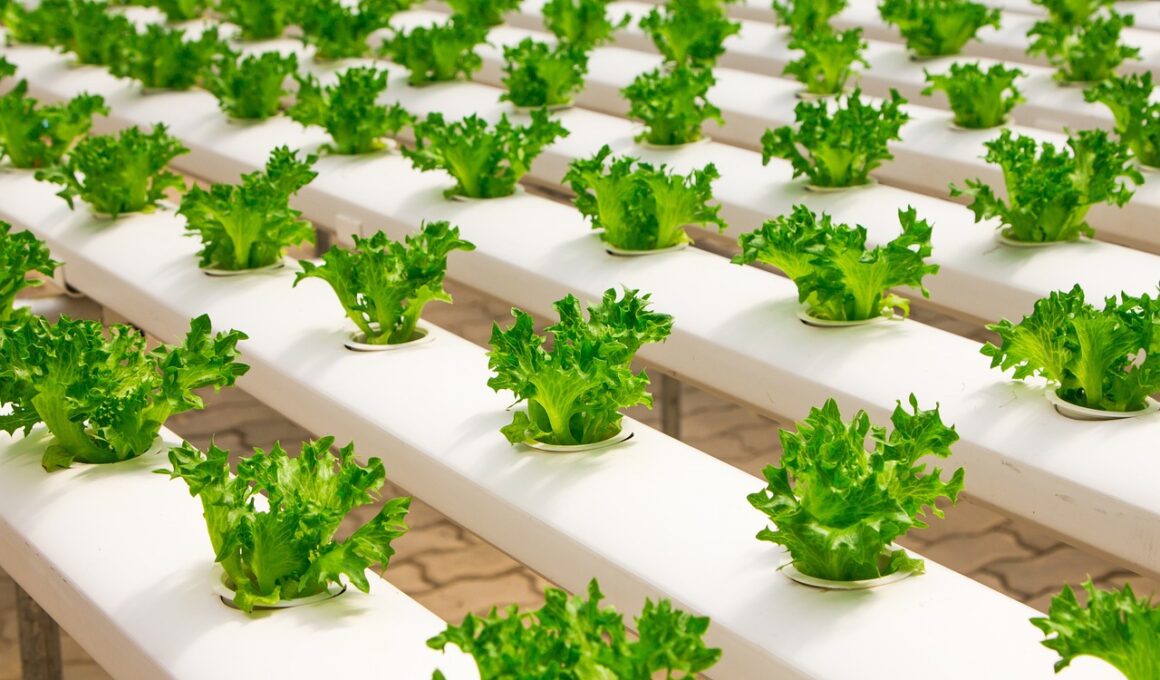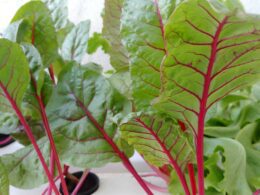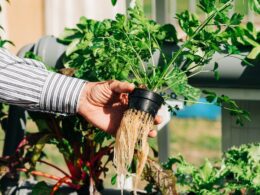Are you considering using chlorine in your hydroponics system but unsure if it’s safe? Chlorine is a common disinfectant used in water treatment and can be effective in killing harmful bacteria and pathogens.
However, it’s important to understand the role of chlorine in hydroponics and both the pros and cons of using it.
In this article, we will explore the use of chlorine in hydroponics and provide tips for using it safely. We understand that safety is a top priority for you and your hydroponics setup, and we want to help you make an informed decision about whether or not chlorine is right for your system.
So, let’s dive in and learn more about the role of chlorine in hydroponics.
The Role of Chlorine in Hydroponics
You might be surprised to learn that the role of chlorine in your hydroponic system could be impacting your plant growth. Chlorine is often added to tap water to kill off bacteria and other harmful microorganisms, but it can have negative effects on your plants.
One major concern with chlorine is its potential health effects. While it’s generally safe for humans to drink tap water treated with chlorine, the same can’t be said for your hydroponic plants. Chlorine can damage your plants’ roots and lead to stunted growth, and it can also affect the pH levels of your water, making it more acidic and less hospitable for your plants.
Another issue with chlorine is its effectiveness over time. While it may work initially to kill off harmful bacteria, it can become less effective as it breaks down over time. This means that you may need to continuously add more chlorine to your hydroponic system, which can lead to even more health concerns for your plants.
Overall, while chlorine can be effective in keeping your hydroponic system clean, it can also have negative effects on your plants’ health and growth. It’s important to consider alternative methods for keeping your water clean, such as using a UV sterilizer or investing in a reverse osmosis system. By doing so, you can ensure that your plants are getting the best possible environment for growth and success.
The Pros of Using Chlorine in Hydroponics
Using chlorine in your hydroponic setup can help keep unwanted bacteria at bay and promote healthy plant growth. Chlorine is a very effective disinfectant that can help prevent the spread of harmful pathogens in your hydroponic system. It’s also a cost-effective solution that can be easily obtained from your local hardware store.
Here are three reasons why chlorine can be a great addition to your hydroponic setup:
- Chlorine is a powerful disinfectant that can effectively kill harmful bacteria and fungi that can damage your plants.
- Chlorine is readily available and affordable, making it a convenient option for many hydroponic growers.
- Chlorine can be easily monitored and controlled using test strips, ensuring that you’re using the correct amount to keep your plants healthy.
While chlorine can be a great option for disinfecting your hydroponic system, there are also alternatives available. Some growers prefer to use hydrogen peroxide or ozone to sanitize their systems. These options can be more expensive but may be preferable for those who wish to avoid the use of chlorine.
Incorporating chlorine into your hydroponic setup can be a great way to promote plant health and prevent the spread of harmful pathogens. By using the correct amount and monitoring your levels, you can ensure that your plants are receiving the best care possible. Consider using chlorine as a cost-effective and convenient solution for disinfecting your hydroponic system.
Can Green Algae in Hydroponics be Harmful Like Chlorine?
Green algae in hydroponics can pose a concern similar to chlorine, but not in terms of harm. While chlorine can be toxic, green algae can disrupt the balance of nutrients in hydroponic systems. It absorbs essential nutrients meant for plants, impacting their growth. Regular inspection and preventive measures can ensure a healthy hydroponic setup.
The Cons of Using Chlorine in Hydroponics
It can be concerning when the water in your hydroponic setup smells like a public swimming pool on a hot summer day. While chlorine can be useful in hydroponics, it also has its downsides. One potential harm of using chlorine is that it can be harmful to the plants themselves. Chlorine in high concentrations can damage the leaves, roots, and overall growth of your plants. In addition, chlorine can also harm the beneficial microorganisms present in your hydroponic system, which can have a negative impact on the overall health of your plants.
Another factor to consider when using chlorine in hydroponics is the environmental impact. Chlorine can be harmful to the environment when it is released into the air or water. It can react with other chemicals and form toxic byproducts, which can be harmful to both humans and animals. In addition, the use of chlorine in hydroponics can contribute to the formation of chlorinated compounds in the environment, which can have negative effects on the ecosystem.
While chlorine can be a useful tool in hydroponics, it is important to weigh the pros and cons before using it. When considering the potential harm to your plants and the environment, it may be worth exploring alternative methods for disinfecting your hydroponic system. By doing so, you can create a safe and healthy environment for both your plants and the ecosystem. Remember, the health and safety of your hydroponic setup should always be a top priority.
Tips for Using Chlorine Safely
When using chlorine in hydroponics, it’s important to follow proper dosage and application instructions to ensure the safety of your plants. You should also monitor pH levels regularly to prevent any negative effects on plant growth.
If you’re not comfortable using chlorine, there are alternative methods available that you can consider.
Make sure you take the necessary precautions to keep your hydroponic garden healthy and thriving.
Proper Dosage and Application
Make sure you apply the appropriate amount of chlorine and follow the recommended application process to ensure the success of your hydroponic system.
The concentration of chlorine you use should be between 1-3 ppm (parts per million) for a short exposure time. This means that you should add 1-3 ppm of chlorine to your water tank for 30 minutes before turning on your hydroponic system. It is important not to exceed this concentration or exposure time as it can be harmful to your plants.
When applying chlorine to your hydroponic system, make sure to wear protective gloves and goggles to avoid skin and eye irritation. It is also important to mix the chlorine solution thoroughly with the water before adding it to your system. This ensures that the chlorine is evenly distributed and prevents any hot spots or concentration areas in your water tank.
Remember, a little bit of chlorine goes a long way, so be cautious in your application to avoid damaging your plants. By following these guidelines, you can safely and effectively use chlorine in your hydroponic system.
Monitoring pH Levels
Now that you know how to properly dose and apply chlorine to your hydroponic system, the next step is to monitor the pH levels.
pH level management is crucial in hydroponics because it affects the nutrient solution balance, which is essential for plant growth.
Chlorine can affect the pH level of the nutrient solution, so it’s important to monitor it regularly.
The ideal pH range for hydroponics is between 5.5 and 6.5, depending on the plants you’re growing.
If the pH level is too high or too low, it can cause nutrient deficiencies or toxicity, which can harm your plants.
To prevent this, use a pH meter or pH strips to test the pH level of your nutrient solution regularly and adjust it as needed.
By managing the pH level, you’ll ensure that your plants are getting the right nutrients they need to thrive.
Alternative Methods
Exploring alternative methods can enhance your hydroponic system and provide new opportunities for growth and experimentation. One such method is vertical farming, which allows for more efficient use of space and resources. Vertical farming involves stacking multiple layers of plants on top of each other, which can increase your yield while reducing the amount of water and nutrients needed for each plant. This method also allows for greater control over environmental factors such as temperature and lighting, which can lead to healthier plants and a more productive system overall.
Another alternative to using chlorine in your hydroponic system is to switch to organic nutrients. Organic nutrients are derived from natural sources such as compost, worm castings, and bone meal, and can provide the necessary nutrients for your plants without the use of harmful chemicals. While organic nutrients may be more expensive than chemical options, they can lead to healthier plants and a more sustainable system in the long run. Additionally, using organic nutrients can improve the taste and quality of your produce, making it more appealing to consumers.
By exploring these alternative methods, you can create a hydroponic system that is not only safe and sustainable, but also productive and profitable.
Conclusion: Making an Informed Decision for Your Hydroponics Setup
By weighing the pros and cons of different options, you can confidently choose the best approach for your hydroponic system. When it comes to using chlorine in hydroponics, you may want to consider alternative methods to minimize risks.
This means choosing alternatives that can still provide effective sterilization without exposing your plants to harmful chemicals. One approach is to use hydrogen peroxide or ozone to disinfect your hydroponic system. Both of these alternatives are effective at killing harmful bacteria and pathogens, while being safer for your plants.
Another option is to use beneficial microbes that can outcompete harmful bacteria, creating a natural balance in your system. This approach not only eliminates the need for harsh chemicals but also helps boost plant growth.
Balancing effectiveness and safety is crucial when evaluating chlorination in hydroponic systems. While chlorine can be an effective disinfectant, it can also be harmful to plants if not used properly. If you choose to use chlorine, be sure to carefully measure and monitor the levels to avoid overexposure. It’s also important to flush the system thoroughly before adding plants back in.
Ultimately, by considering alternative methods and carefully evaluating the use of chlorine, you can make an informed decision that prioritizes the safety and health of your hydroponic setup.
Frequently Asked Questions
What are some alternative disinfectants that can be used instead of chlorine in hydroponics?
Looking for alternatives to chlorine for disinfecting your hydroponic system? Two effective options are ozone sterilization and UV treatment.
Ozone sterilization involves using ozone gas to kill harmful bacteria and viruses in your hydroponic system. It’s a powerful disinfectant that’s fast and effective, but it can be dangerous if you don’t follow safety guidelines.
UV treatment, on the other hand, involves using ultraviolet light to kill harmful microorganisms. It’s safe and easy to use, but it may not be as effective as ozone sterilization.
Overall, both options are great alternatives to chlorine and can help keep your hydroponic system clean and safe.
Can too much chlorine harm plants in a hydroponic system?
Too much chlorine in a hydroponic system can be harmful to plant growth. Chlorine toxicity can cause leaf burn, stunted growth, and even death of the plants. It’s important to use the correct amount of chlorine for disinfecting the system, as too little may not be effective and too much can be detrimental.
Regular testing of the water’s chlorine levels is necessary to ensure that it’s within the safe range for the plants. If you’re experiencing issues with plant growth, it may be worth checking the chlorine levels in your hydroponic system and adjusting accordingly.
Remember, maintaining a properly balanced system is crucial for the success of your hydroponic garden.
How often should chlorine be added to a hydroponic system?
When it comes to adding chlorine to your hydroponic system, the dosage is crucial. Too much chlorine can harm your plants, but the right amount can help prevent algae and bacteria growth.
It’s recommended to test the water regularly and add chlorine as needed, typically every 7-10 days. However, if you want to avoid chlorine altogether, there are chlorine-free systems available. These systems use alternative methods, such as UV light or ozone, to keep the water clean and free of harmful pathogens.
Ultimately, the decision to use chlorine or a chlorine-free system is up to you and your specific growing needs.
Is it safe to consume plants grown with chlorine in hydroponics?
If you’re wondering whether it’s safe to consume plants grown with chlorine in hydroponics, rest assured that chlorinated water is safe for hydroponic consumption. The amount of chlorine used in hydroponic systems is typically very low and within safe limits for human consumption.
Additionally, any residual chlorine in the water is quickly broken down by the plants themselves or by beneficial bacteria in the growing medium. So, while it’s important to monitor and regulate the chlorine levels in your hydroponic system to ensure optimal plant growth, you can feel confident that plants grown with chlorinated water are safe for consumption.
What are the potential long-term effects of using chlorine in a hydroponic system?
Chlorine exposure risks in hydroponic systems can have potential long-term effects on your plants and your health. It’s important to maintain good hydroponic water quality by regularly testing and adjusting the pH and nutrient levels.
However, if chlorine is used, it can kill beneficial bacteria and fungi in the system that are necessary for healthy plant growth. Additionally, inhaling chlorine gas or coming into contact with it can cause skin irritation, respiratory problems, and even lung damage.
To avoid these risks, consider using alternative methods such as UV light or hydrogen peroxide to sanitize your hydroponic system. Always prioritize your safety and the health of your plants by staying informed about the potential risks associated with chlorine use in hydroponics.
Conclusion
So, is chlorine bad for hydroponics? The answer is not a simple yes or no.
Chlorine can be both beneficial and harmful to your hydroponic plants, depending on how it is used. On the one hand, chlorine can help keep your hydroponic system free of harmful bacteria and other contaminants. It can also help to maintain the pH balance of your nutrient solution, which is essential for healthy plant growth.
On the other hand, chlorine can be toxic to your plants if used improperly. It can build up in your nutrient solution and cause root damage or even plant death. It can also react with other chemicals in your system, creating harmful byproducts that can harm both your plants and the environment.
So, if you choose to use chlorine in your hydroponic setup, it’s important to do so safely and responsibly. Use proper dosages, monitor your nutrient solution regularly, and take steps to prevent chlorine buildup. With these precautions in place, you can enjoy the benefits of chlorine without putting your plants at risk.








